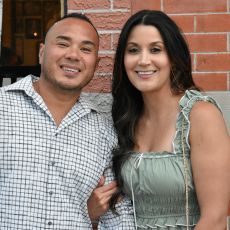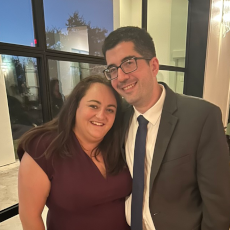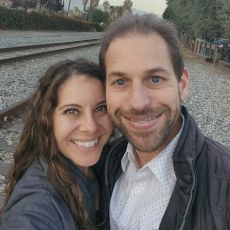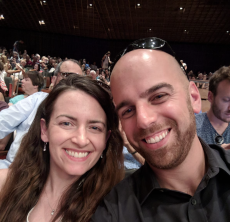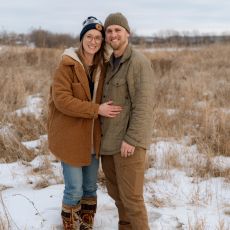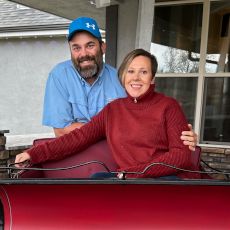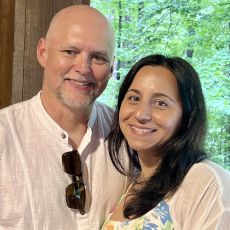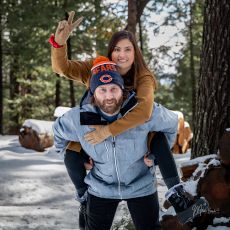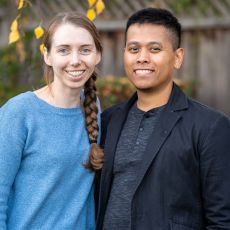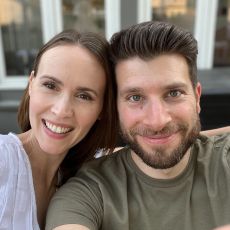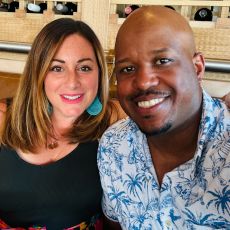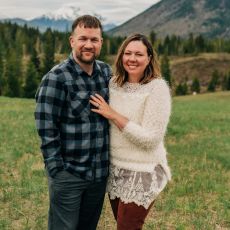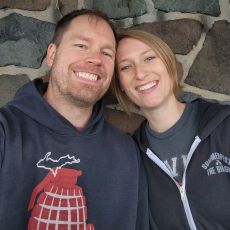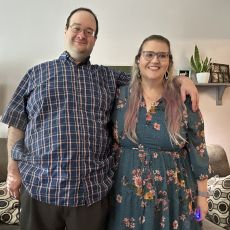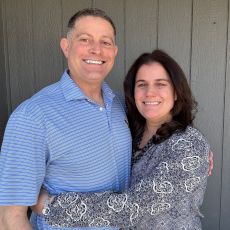What's it like to Give a Child Up for Open Adoption? [How to Stay Connected to Your Child]
Getting to Know the Adoptive Family

If you’re thinking, “I want to give my child up for adoption but I want to know who will adopt him,” open adoption allows you to build a life-long relationship with your child and the adoptive family you choose. Get more information by calling 1-800-ADOPTION now.
Here are three things you need to know about open adoption:
- While adoption was once kept completely anonymous, open adoption has become the most common type of adoption. Today, 95% of all adoptions have some amount of openness.
- Open adoption means you get to stay connected with your child and the adoptive family for years to come.
- The amount of openness in your adoption is completely up to you, as is the type of communication you choose to utilize.
“I’m putting a child up for adoption but want to see who they end up with.”
You can, thanks to open adoption.
Adoption is no longer viewed as a negative act that should remain anonymous. Since the 1980s, it’s quite the opposite. Birth mothers like yourself and adoptive families hopeful for the opportunity to grow their own family are choosing to stay connected and share an open relationship during and after the adoption process.
By choosing adoption, you’re making the selfless, loving decision to give your child the chance to have the life he or she deserves with a family more able to provide a safe, nurturing home. That makes you a hero.
Just because you’re “giving up” your baby for adoption doesn’t mean you’re “giving up” on them. You’re doing what you feel is best for your child. Through open adoption, you can find your child the perfect home with an amazing adoptive family but still maintain an open connection and build a life-long relationship through various forms of open communication.
Caitlin placed her baby for adoption with our agency and remembers the close connection she formed with the adoptive family – something they continue to share today.
“Amanda never left my side — like, she barely went to the bathroom,” Caitlin said. “She held my hand the whole time and then when he was born, I told her, ‘Cut the cord. You can do that; it’s okay.’ I feel like we’re closer, whereas some birth parents wait until the last minute and they don’t have the opportunity to get to know their family. I got to really get to know them, and not just off of the paper.”
“He [their son] gets this family who can take care of him and do everything I couldn’t, but he can also know that I didn’t just give him away. I had a purpose for him, and it was meant to be.”
If you’re ready to start your open adoption journey or would like to get more information on the open adoption process, call one of our adoption specialists at 1-800-ADOPTION or visit us online. Adoptive families ready to adopt a child can fill out our free information form online.
Let’s talk about the history of open adoption and find out how you can create an open adoption birth plan today.
Helpful Information
The History of Open Adoption
In the past, adoptions were either considered open or closed adoptions, and the vast majority fell in the latter category. Up until the 1980s, pregnant women would often leave their hometowns to give birth to their child, and a doctor or an adoption facility would arrange for an adoptive family without the pregnant mother’s input. It was very much a “quick fix” to a woman’s unplanned pregnancy – one that gave birth mothers few options and very little control. These kinds of closed adoptions caused multiple problems for everyone involved:
- Birth Mother – The birth mother would receive little if any, emotional or financial support during this process. Furthermore, she would lose contact with her child forever, with no picture or letter updates that are found in most modern adoptions.
- Adopted Child – Because most adoptions were closed, adoption was much more secretive back then. This often resulted in the child not being told he or she was adopted until much later in life, if ever. Not only would the child be missing a huge piece of their history and identity, but the child also wouldn’t have access to his or her birth family’s medical background.
- Adoptive Family – Keeping the adoption secret placed a heavy burden on the adoptive family. Without disclosing this information to the child from a young age, the news becomes more shocking and more difficult to tell — so much that some families never told their children. And again, not having the birth mother’s past and current medical history was a big problem.
But fortunately, in the 1980s, closed adoptions started to fade away. Adoption professionals, lawmakers, adoption researchers, adoptive families, adoptees and birth mothers all began a movement toward more open adoptions, which has presented a wealth of positives for everyone involved. This openness has all stemmed from one landmark decision agreed on by nearly all adoption professionals: the birth mother is in charge.
As a birth mother in today’s adoptions, you get to choose nearly all aspects of the adoption process, which is referred to as your “adoption plan.” This includes choosing:
- The adoptive family
- The amount of contact you want to share with the adoptive family
- The proceedings at the hospital
- How much contact you have with your child in the future
- And much more
There are many different types of open adoption, which is why it’s sometimes better to look at open adoption on a scale, with one end of the spectrum fully closed and the other being fully open. Most adoptions fall somewhere in the middle, with regularly scheduled contact, like pictures, letters, phone calls and text message updates, sent to you throughout your baby’s childhood.
Call 1-800-ADOPTION to get more information on the adoption process and how an open adoption birth plan works for you.
4 Common Questions about Choosing Open Adoption
Before you begin your adoption journey, you likely have some questions about exactly what open adoption means and what it looks like. Here are the answers to four common questions about open adoption today:
1. “How can I give my baby up for adoption and still keep in contact?”
By choosing open adoption!
This is exactly what open adoption is. Choosing some level of openness with your child’s adoptive family will allow you to continue your relationship with your baby long after you place him or her for adoption.
Simply let your adoption specialist know what kind of relationship you envision having with your baby, and she will guide you through the process to make that happen.
2. “What’s it like to give a child up for open adoption?”
Every open adoption is different because you can have as much or as little contact as you wish.
Most women considering an open adoption will communicate with the adoptive family through phone calls, video calls, emails, pictures and letters. Some prospective birth mothers even have the chance to get to know the family in person if they live close to one another.
Your level of contact is entirely up to you.
3. “What if I want to give my child up for adoption, but I want to know who will adopt him?”
This is a common concern for prospective birth mothers considering adoption.
Women often think that if they place their child for adoption, they won’t know who their baby ends up with — and they will never see or hear from them again. Fortunately, that’s no longer how adoption works.
In fact, not only will you know who your baby ends up with — you will have the opportunity to pick the adoptive parents yourself and can even develop a close relationship with them if you want to.
If you’re considering putting a child up for adoption but want to see who they end up with, know that this will always be the case with American Adoptions. When you choose an open adoption, you can:
- Choose the perfect adoptive family for your baby
- Decide the amount of contact you’d like to have with the adoptive family and your child
- Ask your adoption specialist to mediate contact between yourself and the adoptive family as needed
Even if you decide you’re not comfortable having as much contact with your child and the adoptive family after placement, you will always have the chance to choose the adoptive parents for your baby, if you want to. There are hundreds of waiting families that you can choose from, and all of them are committed to sharing ongoing contact with you.
In fact, American Adoptions is the only agency that requires adoptive parents to agree to share an open adoption with the birth mother, if she requests to do so.
4. “Do the birth and adopted families of an adopted person become friends?”
Again, every relationship is different, but it is entirely possible to develop a friendship with your baby’s adoptive family if that’s what you want.
It is common in open adoptions for birth and adoptive families to develop deep, meaningful relationships. Many describe each other as close friends or even extended family.
If this is something you’re looking for in your adoption relationship, let your adoption specialist know, and look for that sense of connection as you get to know prospective adoptive parents.
Sara chose open adoption and immediately developed a close connection with the adoptive family.
“I fell in love with Brady and Diane instantly. I wanted to talk with them. They were kind, compassionate, non-judgmental and understanding. They called me their angel. We shared family stories. Our families were so similar. When I hung up the phone, I knew this was the family who was going to raise my baby.”
Through open adoption, you can have the same experience as Sara. The level of contact you have with the adoptive family you choose is entirely up to you, but an open adoption with them means you get to carry on a life-long connection – not only with the family that will parent your child. You will remain a fixture in your child’s life, as well.
You can get more of your open adoption questions answered by calling us for free at 1-800-ADOPTION.
Are You Ready to Find the Right Adoptive Parents in an Open Adoption?
Because we work with so many open adoption families, we have plenty who are excited to share the types of contact that you are interested in. Our agency encourages contact between you and the adoptive family, as we believe it leads to healthier adoptions and happier lives for everyone involved.
Every prospective adoptive family we show you are ready for:
- A pre-placement conference call that gives you the chance to ask any questions you have.
- Exchanging email addresses and phone numbers for direct communication with you before and after placement.
- The opportunity to meet in person during your hospital stay and throughout the placement process.
- Sending pictures and letters directly to you for the first 18 years after your adoption.
- An in-person meeting within the first five years of placement.
No matter what amount of contact you would prefer, you can find an open adoptive family that meets your needs.
When you begin searching for adoptive parents with American Adoptions, you’ll notice we have many open adoptive parent profiles for you to choose from. But as you look through these open adoption family profiles, you may be thinking to yourself, “Which family is right for me?” It’s important to take your time and consider all of your options as you look through the different open adoption parent profiles.
You’ll know that you’ve found the right adoptive family once you see their excitement at getting to know you and at welcoming a new life into their home. It may take time, but your adoption specialist will help you find a family that suits your needs and meets your preferences for open adoption.
Are you ready to find the perfect adoptive family for your child? By calling us at 1-800-ADOPTION, you can start your open adoption birth plan today.
You can also begin viewing some of our available family profiles online.
Getting to Know the Adoptive Family [You Can Build a Life-Long Relationship]
Here are some of the different ways in which you can get to know your chosen adoptive family before the adoption:
Conference Calls – When you first choose an adoptive family for your baby, your adoption specialist will likely schedule a phone call between you and the adoptive parents to help you get to know each other better. Your adoption specialist can be on the phone call to offer support and comfort.
Email and Phone Number Exchange – You and the adoptive parents may email or call one another with updates and questions throughout your pregnancy and adoption process. Emails are popular because you may respond to them at your convenience.
Visits – Visits are in-person meetings between you and the adoptive parents in your hometown. They will travel to you and usually meet you over lunch or dinner, where you can get to know each other even better.
After the Adoption: Your Open Adoption Agreement
Here are some of the ways you and the adoptive family can keep in touch after the adoption:
Pictures and Letters – Nearly all women choose to receive pictures and letters of their child for the first 18 years of his or her life. You can exchange these updates with the family directly or, if you’re planning to have a semi-open adoption, your specialist will explain how you'll receive your pictures and letters.
Phone Calls/Skype – You may choose to have phone calls or Skype sessions with the adoptive parents and/or your child, helping you stay involved in his or her life.
Social Media/Email – Stay connected with the adoptive family over the Internet. There are several apps available to help make frequent contact easier. You will want to talk to your adoption specialist about social media tips and etiquette in adoption.
Visits – Many families are open to regular visits if you want this type of post-adoption relationship with your child. All families who work with American Adoptions are ready to commit to at least one visit within the first five years after your adoption is completed. Your adoption specialist can help you find an adoptive family who still lets the birth mother visit if that’s something you decide you want.
What to Know About Open Adoption Agreements
Once you have looked through some open adoption profiles and chosen the perfect family for your baby, your adoption specialist will help you create an open adoption birth plan that outlines your future contact with them. This plan is sometimes referred to as an “open adoption agreement.”
One aspect of open adoptions that birth parents and adoptive families tend to be worried about is if their open adoption agreements are legally enforceable. Most of the time, when an adoptive family and the birth parents decide to have an open adoption the agreement is built on trust, so they won’t need to write out a formal contract. Open adoption families understand the benefits of open adoption for you, their children and themselves, and they are excited about the opportunity to build a relationship with you.
Depending on your state, however, you may be able to make a legally binding open adoption contract. You’ll want to talk to your adoption attorney to understand which rules and regulations apply to your state for open adoption. You can also look at open adoption agreement samples for examples of what to put in your open adoption contract.
Are You Ready to Create an Open Adoption Plan?
To get answers to your questions about the adoption process, you can ask Michelle, a birth parent specialist and a birth parent herself. She has a semi-open adoption with her birth child, and she’s ready to answer any questions you have about putting a baby up for adoption.
“I am available to answer any questions that arise, particularly from birth moms, as I have been in your shoes and know how you are feeling.”
To learn more about open adoption with the adoptive family and your child, contact an adoption specialist today at 1-800-ADOPTION or complete the following for free adoption information.
You can also begin searching for open adoptive families by browsing our open adoption parent profiles here. Adoptive families wanting more information on adopting a child can click here to get more information.
Disclaimer
Information available through these links is the sole property of the companies and organizations listed therein. American Adoptions provides this information as a courtesy and is in no way responsible for its content or accuracy.


